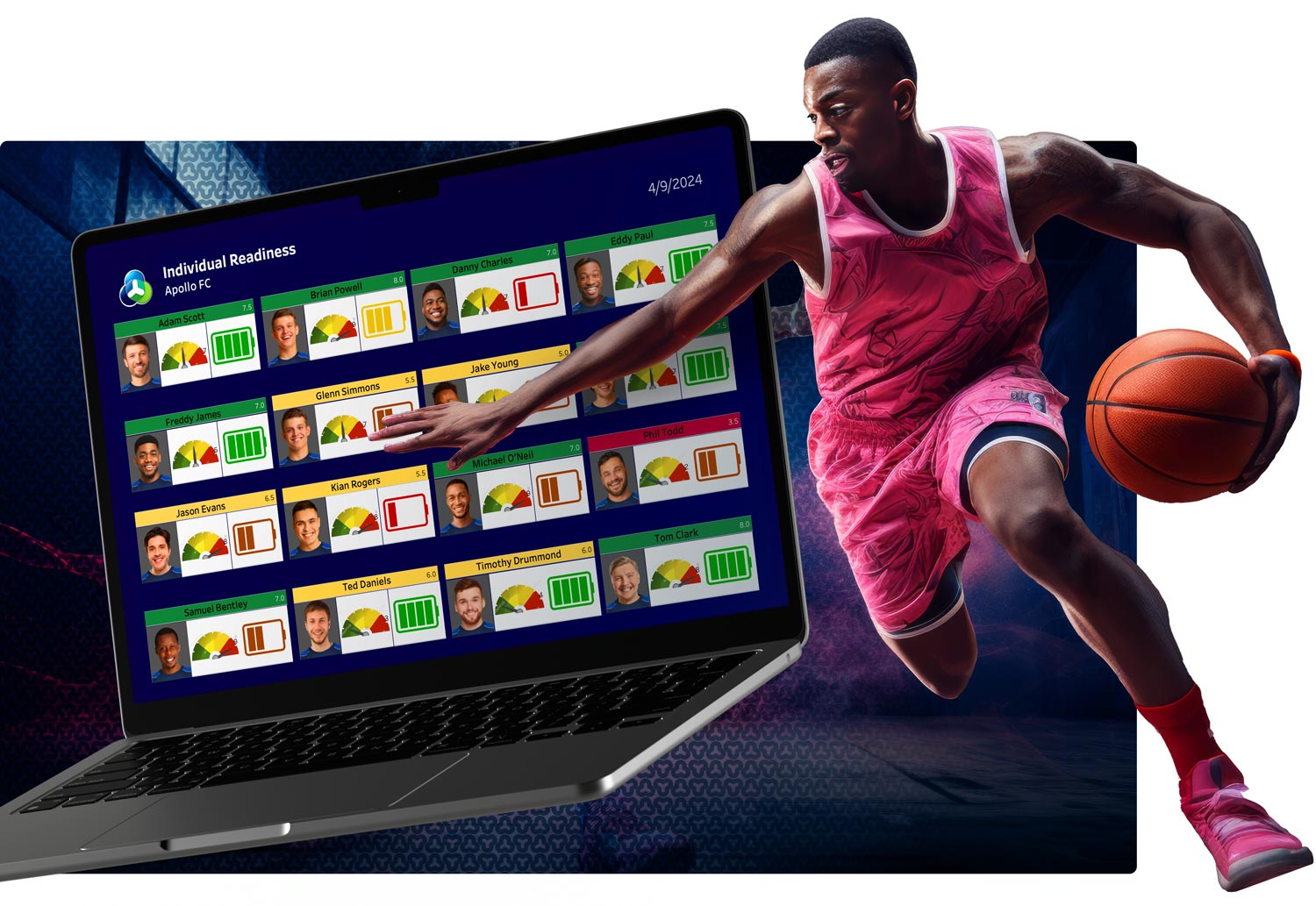Influencing Decision Makers:
Using Data Visualization To Inform Coaching Decisions & Maximize Training
In any sports team, the responsibility for important training-related decisions usually lies with the coaching staff, with the ultimate decision maker often being one person – the Head Coach.
But how can coaches be confident that their training programs are directly improving team performance? How do they know for certain that the decisions are appropriate to the current status of the players? Are the training sessions they design supporting individual player progression, or put those players at unnecessary risk of injury?
Ultimately – are coaches receiving the data they need to ensure that their decision making is as well-informed as possible?
Even at the highest levels of sport, we see impactful training decisions being made in isolation, mainly because data isn’t flowing quickly enough to the key decision makers. Medical staff, sports scientists and S&C practitioners have to ask themselves a question; is the data they collect really making any difference?
It is increasingly apparent that bridging gaps in data – and communicating that data – is the key to enhanced performance. Apollo’s bespoke reporting and data visualizations can do exactly that, in order to influence decision makers, optimize the training process, and increase the probability of winning.
Part 2: Training Readiness, and Establishing Player Status Quickly
Training sessions are designed by coaches according to the technical and tactical objectives which emerge from the Game Model. Fitness coaches will then make recommendations concerning the volume and intensity of these sessions based on their own identified physical objectives.
This integrated approach to training, where all aspects of performance are developed under game specific conditions, results in a greater likelihood of performance improvements being transferred from the training ground into the competitive arena.
However, can coaches be certain that their planned training session is appropriate to the current status of the players?
When fatigued players are exposed to excessive training demands, the effectiveness of that session will be limited – and the risk of injury will increase. For this reason, coaches need to be aware of the physical status of their players before they take part in the session – a term we refer to as ‘training readiness’ or Adaptation Potential.
The major problem with this is that fatigue is multifaceted, and can come from multiple different sources, therefore practitioners working within sports teams often use a vast number of tools to help establish an athlete’s level of trainability.
Sports scientists, S&C coaches and medical staff will collect data on parameters such as sleep quality, HRV, jump height, isometric force production, subjective wellness, muscle soreness, hydration, biochemical markers, flexibility … The list is endless.
However, if the outcome from all of these different tests are presented to coaches individually or in a segregated format, how can they be expected to make sense of it? Unless pre-training data is assimilated quickly and given to coaches in a way that they can understand at-a-glance, it’s unlikely to make any difference to the content of a training session, therefore what is the point in collecting it in the first place?
Apollo’s solution to this is what we call the Readiness Dashboard. Our API’s pull data from all the multiple tools and systems that different practitioners within the support staff are using. Then, powered by our specific AI models, we bring it all together in a centralized report quickly enough to identify the readiness levels of each individual athlete. This gives coaches the information that they need to make informed training decisions – crucially, in enough time for them to adapt their sessions whenever necessary.

- The Battery identifies each player’s energy reserves
- The Rev Counter indicates their ability to tolerate load
Using the Readiness Dashboard, coaches can see at-a-glance which players are in a well-recovered state and are able to train at high intensities, and which players might be fatigued and under-recovered. This allows them to modify the content of their training session appropriately.
WHAT APOLLO CAN DO FOR YOU
Our system equips teams with the ability to generate custom-made data visualizations without software code. We have more API’s than any other system, which allows us to collect data from the multiple tools and systems staff are using, and then combine it efficiently to allow coaches to make informed decisions with their players.
We have Power Bi and Tableau integrated into our ecosystem, which enables us to build bespoke, best-in-class data reports designed to meet specific requirements and ensure that coaches receive the data driven insights they need, to inform decision making and influence positive change.
To learn more about using ApolloV2 for performance enhancement, email – alamb@apollov2.com.


Recent Comments